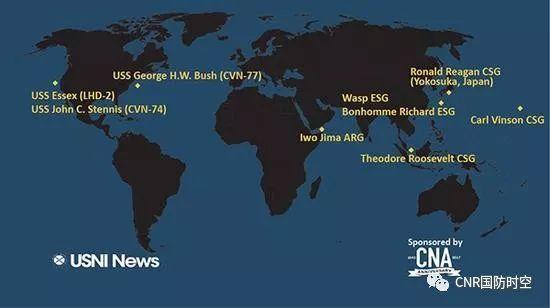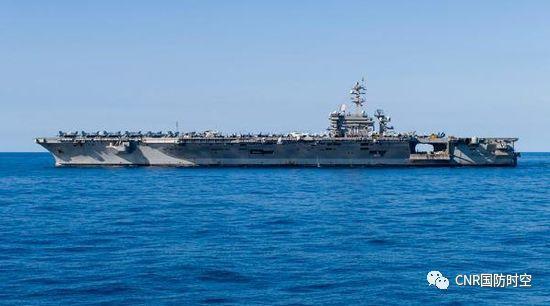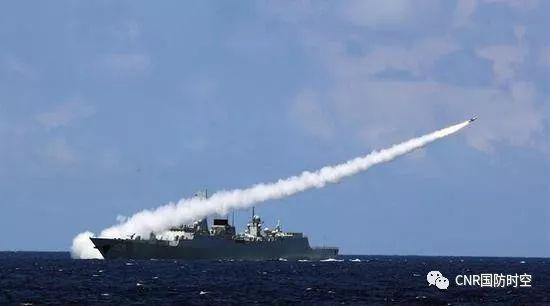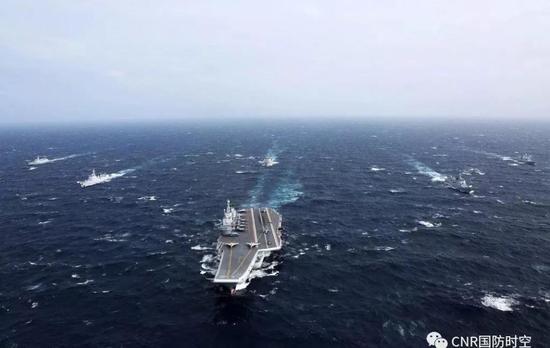PLA BG says Dotard can sent 10 carriers, my Rocket Army just PIAK altogether sink.
http://mil.news.sina.com.cn/china/2018-04-07/doc-ifyvtmxc3280710.shtml
少将:美军3航母云集南海是子虚乌有 来10艘也能应付
少将:美军3航母云集南海是子虚乌有 来10艘也能应付
0
少将:美军3航母云集南海是子虚乌有 来10艘也能应付
这两天,一篇名为《美国58艘舰艇云集南海周边 含至少3个航母战斗群》的新闻被炒得沸沸扬扬,美国这么多舰艇齐聚南海有什么目的?与此同时,中国航母编队也在南海进行例行训练,美国的航母编队是否会干扰中国正常训练?
美国海军协会新闻网站4月2日公布的信息显示,“罗斯福”号航母已经抵达新加坡。
CNR国防时空记者周宇婷: 报道称,美军部署在亚太方向的第七舰队舰艇数量已达58艘,是美国海军几个舰队当中最多的。一南教授,美国为什么要往亚太地区派来这么多舰艇呢?
金一南: 第一点 美国人要显示它的力量,因为美国所谓的亚太再平衡就讲过了,要把60%的海军作战舰艇转到亚太,转到西太平洋,主要对付中国。最近网上炒得很厉害,三个航母编队来了亚太地区。没有像网上说得那么悬乎,说的那三个航母编队,是哪三个航母编队呢?里根号?里根号现在停在横须贺呢,在横须贺干什么呢?检修呢。卡尔文森号在哪里?在关岛。罗斯福号到了新加坡。非常广大的海域,什么三个航母编队云集南海,那简直是子虚乌有的事情。
实际上现在只有罗斯福号航母在新加坡,在南海的最南端,带了几条军舰,而这几条军舰带的也不是航母战斗群,只是航母伴随舰。因为一个完整的航母战斗群要有数艘驱逐舰,起码要有一艘到两艘巡洋舰,和两艘到三艘核潜艇的配合。现在它没有完成这种战斗编队。
大家一定要注意这个问题,即使三个航母都到了南海,那又如何,更何况现在根本没有的事情。南海面积近三百万平方公里,我们在南海航行的时候,包括南海南沙群岛诸岛我们都去过,南海航行一望无际,航母哪怕10万吨级的,在海上就一叶小舟而已,南海那么广大的海域,现在就美国一个航母编队停在新加坡,其它两个都相距甚远。所以我说即使三个航母编队都来了,在南海也是沧海一粟的问题。
美国海军“卡尔?文森”号航母在南海进行航行(资料图)
CNR国防时空记者周宇婷: 这么一分析,感觉这个新闻是个标题党 ,听起来挺吓人的。
金一南: 对,标题是耸人听闻的。
中国海军资料图
CNR国防时空记者周宇婷: 但不管怎么说,近些年来,美国的航母编队群是越来越常往南海跑,我们如何来看待这些不速之客?
金一南: 2015年7月,戴秉国国务委员在美国参加战略经济对话时说,南海就来十个航母编队我们都不害怕,我们能够有效的应对,否则半个航母编队都吓破胆了,为什么吓破胆?
就是不能有效应对,我们讲来十个航母编队我们都能够有效的应付,就是说我们根本不在乎你这点力量,你这点力量来了可以,你可以耀武扬威,你除了耀武扬威你还能干什么,你能向我发动进攻吗?你敢于开火吗?你敢于首先打第一枪吗?
这非常明显的态势,它的航母编队来了,首先不是战斗编队,不是执行任务的编队,是一条航母卡尔文森号带一条驱逐舰来了。来干什么呢?就是巡游的。
我们的能力能够有效的维护我们南海的权益,你几个编队来动摇不了我们的, 这就是底数,这个底数不光是表态的问题,是有力量所支撑。
当然凡事都是一分为二,从某种程度上说,美舰,尤其航空母舰经常来,对我们不是单纯的坏事,你来了可以,你来了以后不断地威胁我们,不断地吓唬我们,我们也正好通过这个掌握住航母的活动规律,雷达特征,信号特征,而且我们也不妨跟踪跟踪,都可以。在这种情况下,美国航母来也非常警惕的,什么无线电静默,搞这一套,航母来了以后,它的各种无线电信号也需要控制,怕被各方面窃取,所以它一趟一趟的来,一趟一趟的示威,但是也是一趟一趟的暴露,暴露它的各种各样的特征, 这种暴露的过多对它是好事吗,其实它也知道对它也不是好事。
CNR国防时空记者周宇婷: 对,打仗的时候一定要知己知彼,现在它不断到南海,到我们家门口来,实际上也是给我们提供了一个观察它的好机会?
金一南: 这是个非常好的机会,观察、熟悉、了解和判定对手,他不断向你贴近,就能够提供这样的机会。我们以前叫火力侦察、抵近侦察,贴近对方侦察。现在不用了,它送上门来了,起码我们双方对抗还没有开始,就给我们提供了非常好的侦察机会,这是非常好的机会。
而且正因为它一遍遍的挑衅,因为它的提示,我们要反复增强在南海的军力部署,包括反航母部署。这就是毛泽东主席讲过的,反面教员的作用。如果没有反面教员,我们很多事是认识不清的,当我们部署之后,周边各国都知道了,菲律宾知道了,马来西亚知道了,文莱知道了,甚至跟美国关系非常好的新加坡也知道了,但是我们在南海的所有部署不是针对文莱、马来西亚、菲律宾和越南,我们主要针对对我们实施威胁的,谁对我们威胁,我们针对谁。我们军事部署主要是这一点,指向性非常明确,所以美舰来得越多,南海周边各国肯定会越担心,它们虽然不吭气,但是内心越能理解中国部署在南沙,在南沙整个南海增强军力部署的主要针对性,主要针对谁。
中国海军航母编队
CNR国防时空记者周宇婷: 所以美军的航母来了,对我们不仅不能形成威慑,而且也让南海各国更加的理解中国的举措。
中国海军将从今天开始在南海进行军事训练。海南海事局用英文发布了“南海军事训练临时禁航”通知,从4月5号一直到11号,一周的时间,将在南海进行军事训练。西方媒体公布的卫星照片显示,中国海军在南海集结了包括辽宁舰、052系列驱逐舰以及多艘潜艇在内的40多艘舰艇,空中还有飞机编队伴随,一南教授,您怎么看待中国海军的这次演习?
金一南: 我们在加强南海的战备行动,就像习主席讲的军队是干什么呢?军队需要能打仗、打胜仗。那海军,我们的海上武装力量就是得能打仗、打胜仗,所以我们进行必要的训练和演习,是完全正当的。
但是大家一说,这回在南海,中国人民解放军海军数十艘军舰云集南海,美国数十艘军舰云集南海,好像大战在即,大家仔细看看,我们的演习在南海的北端,离海南岛非常近,美军军舰在新加坡,南海一个在北头,一个在南头,没有像大家想象那样,大家没有出过海,以为是两国军舰几十艘交叉在一起,都在南海。哪里的事情?南海将近三百万平方公里的水域面积,就是十艘航母编队到了南海,星罗棋布,也分散得跟撒胡椒面一样了,因为海域太大了,更何况现在我们的演习主要集中在南海北部,美国的行动主要集中在南海南部,双方的距离还是很大。
南海今天这样一个态势,并没有达到像网上宣传的那种,好像一触即发,双方舰艇马上擦枪走火,完全没有达到那个程度,演习各方都能够理解,都要进行演习,国际水道、国际航道都有通行权利,并不是美舰到了南海就直接侵占我们的权利了,南海整个都是我们的,这也不对,南海是国际水域,是国际航道,各国船只都能够航行,所以在这个区域演习,你在国际水域事先划定区域,告诉我演习区域,为了避免误伤,这完全可以。
当然我们要做好准备,防止对方挑衅,这是一方面。另一方面,我们没有必要过度紧张,我们有些时候要有些自信,这个自信得相信我们的力量能处理好我们的问题,能够有效捍卫我们的权益,我们跟过去已经完全不一样了,这是一个基本的事实。
CNR国防时空记者周宇婷: 好的,感谢一南教授,感谢收《一南军事论坛》,下周见。
(图片来源网络)
Major General: U.S. Army 3 Carriers Conquering the South China Sea
Major General: U.S. Army 3 Carriers Conquering the South China Sea
0
Major General: U.S. Army 3 Carriers Conquering the South China Sea
On these two days, a piece of news entitled “The 58 ships of the United States gathered in the South China Sea and contained at least 3 carrier battle groups around the South China Sea” was buzzed up. What purpose did the United States have for gathering so many ships in the South China Sea? At the same time, the Chinese aircraft carrier team is also undergoing routine training in the South China Sea. Will US aircraft carrier formation interfere with China's normal training?
The information released by the US Naval Association news website on April 2 shows that the aircraft carrier "Roosevelt" has arrived in Singapore.
CNR’s national defense space reporter Zhou Yuting: According to reports, the number of US ships deployed in the Asia-Pacific direction of the Seventh Fleet has reached 58 ships, which is the largest among the US Navy’s several fleets. Prof. Yunan, why did the United States send so many ships to the Asia Pacific region?
Jin Yinan: The first point Americans want to show its strength, because the United States has talked about the so-called Asia-Pacific rebalancing. It is necessary to transfer 60% of naval combat ships to the Asia-Pacific region and to the Western Pacific Region, mainly to deal with China. Recently, the Internet has become very powerful and three aircraft carrier teams have come to the Asia-Pacific region. Didn't say so much like the Internet, said that the three aircraft carrier formation, which is the three aircraft carrier formation? Reagan? The Reagan now stops in Yokosuka. What does it do in Yokosuka? Overhaul it. Where is the Calvinson? In Guam. The Roosevelt arrived in Singapore. Very vast sea areas, and the formation of three aircraft carriers in the South China Sea, it is simply nothing.
In fact, only the Roosevelt aircraft carrier is in Singapore. At the southernmost point of the South China Sea, there are several warships. These warships do not carry the carrier battle group, but only the carrier carrier. Because a complete carrier battle group must have several destroyers, at least one or two cruisers are required to cooperate with two to three nuclear submarines. It does not complete this battle formation now.
Everyone must pay attention to this issue. Even if all three aircraft carriers have arrived in the South China Sea, what will happen, let alone something that is not present at all. The South China Sea covers an area of nearly 3 million square kilometers. When we sailed in the South China Sea, including the South China Sea Islands, we have all been to the South China Sea. The South China Sea sails endlessly. Even if the aircraft carrier is 100,000 tons, it will be a small boat on the sea. In the sea area, the United States now has an aircraft carrier formation in Singapore. The other two are far apart. So I said that even if the three aircraft carrier formations are coming, the South China Sea is also a problem of a drop in the sea.
US Navy "Carl-Venden" aircraft carrier sailing in the South China Sea (profile) US Navy "Carl Carlson" aircraft carrier sailing in the South China Sea (datasheet)
CNR Zhou Yuting, a defense space reporter: With such an analysis, I feel that the news is a title party and it sounds scary.
Jin Yinan: Yes, the title is sensational.
Chinese Navy Data Figure Chinese Navy Data Figure
CNR’s national defense space reporter Zhou Yuting: In any case, in recent years, the United States’ fleet of aircraft carrier formations has increasingly ran to the South China Sea. How do we view these uninvited guests?
Jin Yinan: In July 2015, State Councilor Dai Bingguo attended the Strategic Economic Dialogue in the United States. He said that we are not afraid of coming to the formation of 10 aircraft carriers in the South China Sea. We can effectively cope with it. Otherwise, the formation of a half aircraft carrier is frightened. Why frightened? We can't deal with it effectively. We talk about the ten aircraft carrier formations we can effectively cope with, that is to say, we don’t care about your strength. You can do this with strength. You can make a bold gesture. What else can you do in addition to Yaowu? Can you launch an attack on me? Do you dare to open fire? Do you dare to hit the first shot first?
This is a very obvious situation. Its aircraft carrier formation came first. It was not the formation of a battle, not the formation of a mission. It was an aircraft carrier Carl Vinson with a destroyer. What are you doing? It is a parade.
Our capabilities can effectively safeguard the rights and interests of our South China Sea. You can't shake us with a few formations. This is the base number. This base is not only a question of position, but also has strength to support it.
Of course, everything is divided into two parts. To a certain extent, American ships, especially aircraft carriers, often come to us. They are not simply a bad thing for us. You came. When you come, we constantly threaten us and constantly scare us. We also use this to master the law of aircraft carrier activity, radar characteristics, and signal characteristics, and we can also track and track it. In this case, the U.S. aircraft carrier is also very vigilant. What radio silence does it? When the aircraft carrier comes, all kinds of radio signals need to be controlled. It is afraid of being stolen by all parties. The coming, one-on-one demonstrations, but also one-on-one exposures, exposed its various characteristics. Is this excessive exposure to it a good thing? In fact, it also knows that it is not a good thing for it. .
CNR Zhou Yuting, national defense space reporter: Yes, we must know each other when we go to war. Now that it continues to travel to the South China Sea, to our doorstep, it actually gives us a good opportunity to observe it.
Jin Yinan: This is a very good opportunity to observe, familiarize with, understand and judge opponents. He keeps coming close to you and can provide such opportunities. We used to call fire reconnaissance, close to reconnaissance, and close to each other's reconnaissance. Now it is no longer needed. It was sent to the door. At least our confrontation between the two sides has not yet begun. It provides us with very good reconnaissance opportunities. This is a very good opportunity.
And because of its provocations over and over again, because of its hints, we must repeatedly strengthen our military deployment in the South China Sea, including anti-aircraft deployment. This is what Chairman Mao Zedong had said and the role of the opposing teacher. If we don’t have negative teachers, many things are unclear to us. When we are deployed, neighboring countries all know, the Philippines knows, Malaysia knows, and Brunei knows that Singapore, even with a very good relationship with the United States, knows. However, all our deployments in the South China Sea are not targeted at Brunei, Malaysia, the Philippines and Vietnam. We are mainly targeting at threats against us and who threaten us and whom we target. Our military deployment is mainly focused on this point. The directionality is very clear. Therefore, the more US ships come, the more worried the countries around the South China Sea will be. Although they are not unlucky, they can understand that China is deployed in Nansha and deploy military forces throughout Nansha across the South China Sea. The main focus is on whom.
Chinese Navy Aircraft Carrier Formation Chinese Navy Aircraft Carrier Formation
CNR’s national defense space reporter Zhou Yuting: Therefore, the arrival of the US military’s aircraft carrier not only did not create a deterrent to us, but also enabled the South China Sea countries to understand more about China’s initiatives.
The Chinese Navy will begin military training in the South China Sea today. The Hainan Maritime Safety Administration issued a notice in English on the "Temporary Ban on Military Training in the South China Sea". From April 5 to 11 and a week, it will conduct military training in the South China Sea. Satellite photos released by Western media show that the Chinese Navy has assembled more than 40 ships including the Liaoning ship, the 052 series destroyer, and multiple submarines in the South China Sea. The air is also accompanied by aircraft formation. Professor Younan, what do you think of the Chinese Navy? This exercise?
Jin Yinan: We are stepping up our war preparations in the South China Sea. Just like what Xi was talking about as an army? The army needs to be able to fight and win. The navy, our armed forces on the sea, must be able to fight and win battles. Therefore, it is entirely proper for us to conduct the necessary training and exercises.
But as soon as everyone said, this time in the South China Sea, dozens of naval vessels of the Chinese People's Liberation Army gathered in the South China Sea and dozens of naval ships in the United States gathered in the South China Sea. As if the great war was just around the corner, we took a closer look. Our exercise was at the northern end of the South China Sea and was very close to Hainan Island. The U.S. warships are in Singapore. The South China Sea is in the north and one is in the south. As everybody imagined, everyone did not go out to the sea, thinking that it was the dozens of ships of the two countries that crossed each other, all in the South China Sea. Where's the thing? The area of nearly three million square kilometers of waters in the South China Sea is the formation of ten aircraft carriers. It is dotted with the South China Sea. It is also scattered like a pepper. Because the sea is too big, let alone our exercises are mainly concentrated in the northern part of the South China Sea. The actions are mainly concentrated in the southern part of the South China Sea. The distance between the two parties is still very large.
Such a situation in the South China Sea today has not reached the kind of online propaganda that seems to have been triggered. The two ships immediately wiped their guns and fired, and they did not reach that level. All parties to the exercise can understand that they must conduct drills. International waterways and international shipping routes are all Right of passage does not mean that US ships will directly encroach upon us in the South China Sea. The entire South China Sea is ours. This is not right. The South China Sea is an international waters, an international waterway, and vessels of all countries can sail. Therefore, exercise in this region, You delineated the area in international waters and told me the exercise area. This is perfectly possible to avoid accidental injury.
Of course, we must be prepared to prevent each other from provoking. This is on the one hand. On the other hand, we do not need to be over-stretched. We have to be somewhat self-confident. We believe that our strength can handle our problems effectively and we can effectively defend our rights. We are completely different from the past. This is a Basic facts.
CNR National Defense Space Time reporter Zhou Yuting: Yes, thank Professor Yi Nan and thank you for receiving the "South-South Military Forum." See you next week.
(Image source network)



































































































































































